It looks like you're using an Ad Blocker.
Please white-list or disable AboveTopSecret.com in your ad-blocking tool.
Thank you.
Some features of ATS will be disabled while you continue to use an ad-blocker.
7
share:
Believe the thread name is because I have to stay with the original link, I have no qualms over whether this is creepy or cool. This is seriously
something that I could have added to any forum, from social issues, to medical conspiracies, you name it it seems to cover it.
We (IMHO) are again embarking on something that I see as invasive, intrusive and down right offensive.
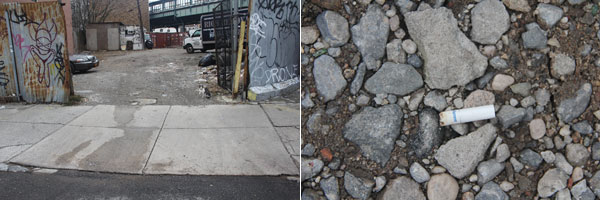
At 12:15 pm on January 6, 2013, Dewey-Hagborg collected a cigarette butt (above, right) on Myrtle Avenue (above, left) in Brooklyn, NY. Testing the sample’s DNA revealed the smoker to be a male of Eastern European descent with brown eyes. Photos courtesy of Heather Dewey-Hagborg
Here are her results-
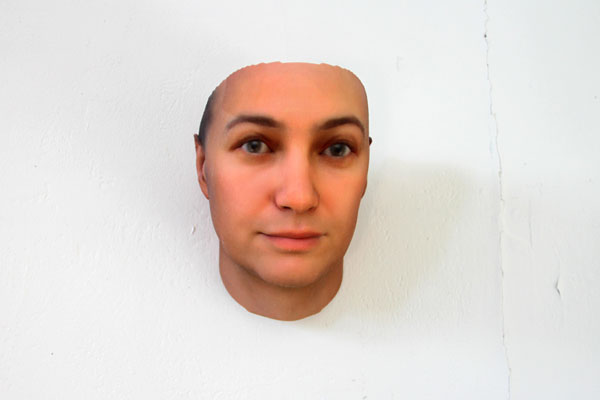
The artist produced this facial reconstruction from her DNA analysis of the cigarette butt she collected at Myrtle Avenue and Himrod Street. Image courtesy of Heather Dewey-Hagborg.
blogs.smithsonianmag.com... cebook.com&utm_medium=socialmedia&utm_campaign=20130503&utm_content=collageartdna
So I leave you with just this, as I seriously feel the thread speaks for itself.....
Peace, NRE.
We (IMHO) are again embarking on something that I see as invasive, intrusive and down right offensive.

At 12:15 pm on January 6, 2013, Dewey-Hagborg collected a cigarette butt (above, right) on Myrtle Avenue (above, left) in Brooklyn, NY. Testing the sample’s DNA revealed the smoker to be a male of Eastern European descent with brown eyes. Photos courtesy of Heather Dewey-Hagborg
Here are her results-

The artist produced this facial reconstruction from her DNA analysis of the cigarette butt she collected at Myrtle Avenue and Himrod Street. Image courtesy of Heather Dewey-Hagborg.
It started with hair. Donning a pair of rubber gloves, Heather Dewey-Hagborg collected hairs from a public bathroom at Penn Station and placed them in plastic baggies for safe keeping. Then, her search expanded to include other types of forensic evidence. As the artist traverses her usual routes through New York City from her home in Brooklyn, down sidewalks onto city buses and subway cars—even into art museums—she gathers fingernails, cigarette butts and wads of discarded chewing gum.
Do you get strange looks? I ask, in a recent phone conversation. “Sometimes,” says Dewey-Hagborg. “But New Yorkers are pretty used to people doing weird stuff.”
Dewey-Hagborg’s odd habit has a larger purpose. The 30-year-old PhD student, studying electronic arts at Rensselaer Polytechnic Institute in Troy, New York, extracts DNA from each piece of evidence she collects and enters this data into a computer program, which churns out a model of the face of the person who left the hair, fingernail, cigarette or gum behind.
It gets creepier.
From those facial models, she then produces actual sculptures using a 3D printer. When she shows the series, called “Stranger Visions,” she hangs the life-sized portraits, like life masks, on gallery walls. Oftentimes, beside a portrait, is a Victorian-style wooden box with various compartments holding the original sample, data about it and a photograph of where it was found.
blogs.smithsonianmag.com... cebook.com&utm_medium=socialmedia&utm_campaign=20130503&utm_content=collageartdna
So I leave you with just this, as I seriously feel the thread speaks for itself.....
That said, the “Stranger Visions” project is a startling reminder of advances in both technology and genetics. “It came from this place of noticing that we are leaving genetic material everywhere,” says Dewey-Hagbog. “That, combined with the increasing accessibility to molecular biology and these techniques means that this kind of science fiction future is here now. It is available to us today. The question really is what are we going to do with that?”
Peace, NRE.
The first thing I notice about this, is that she doesn't choose DNA from a source that could be found and compared to her work. She doesn't want
anyone to check to see how accurate she is. My guess is that she gets a few of the details (ethnicity breakdown etc) and fudges the rest
Yes that could be cool in an arty way.However it is creepy as all get out!!Glad I don't chew gum or throw butts around.Yet hair that is the
freakiest!I can't control when my follices release!!Geez.S and F for you.
reply to post by jessejamesxx
Yeah that was my first though..lets see how it compares to a known person.
Yeah that was my first though..lets see how it compares to a known person.
thats really cool. Theres a problem with aging tho, buts still really cool.
Originally posted by jessejamesxx
The first thing I notice about this, is that she doesn't choose DNA from a source that could be found and compared to her work.
She's done a self portrait...
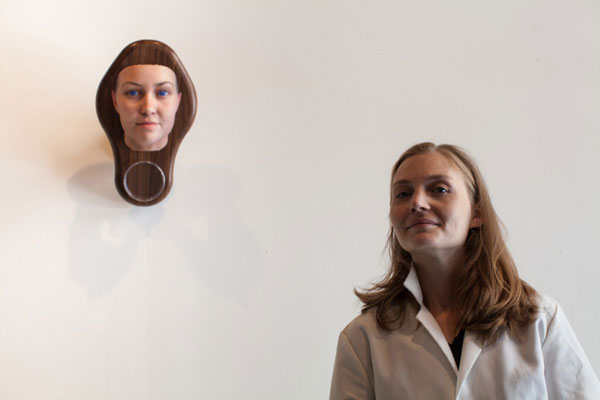
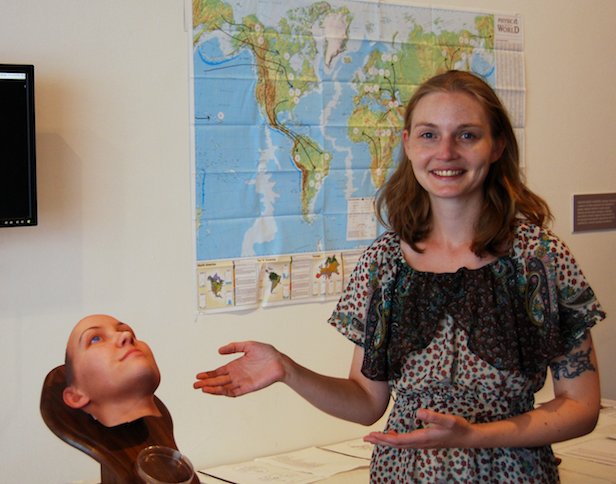
I lived in NYC most of my life, and can tell you, she is naming the exact date, time, and location where she is getting her samples, how hard is it to
see if its you?
If I were in BK and saw this it wouldnt be that hard to try and find out who it was if they lived in my area. I am figuring that she is saying that she cannot do too much, so that eventually people dont sue her for whats shes doing.
She may not be able to identify as you are today, but just by the DNA alone she can tell someone more about them than most already know.
Example from the cigarette butt
Peace, NRE.
If I were in BK and saw this it wouldnt be that hard to try and find out who it was if they lived in my area. I am figuring that she is saying that she cannot do too much, so that eventually people dont sue her for whats shes doing.
She may not be able to identify as you are today, but just by the DNA alone she can tell someone more about them than most already know.
Example from the cigarette butt
1381 Myrtle ave. Brooklyn, NY
MtDNA Haplogroup: H2a2a1 (Eastern European)
SRY Gene: present
Gender: Male
HERC2 Gene: AA
Eye Color: Brown
Peace, NRE.
reply to post by alfa1
That hardly proves that she's accurate.
I could do a self- portrait as well.
She's done a self portrait...
That hardly proves that she's accurate.
I could do a self- portrait as well.
edit on 6/5/2013 by Theflyingweldsman because: there is a reason for everything
Here's another one, from her blog.
Its not perfect, but I think the comparison with the lower picture is not bad for a non-professional individual doing this as art.
The FBI probably has better tools.
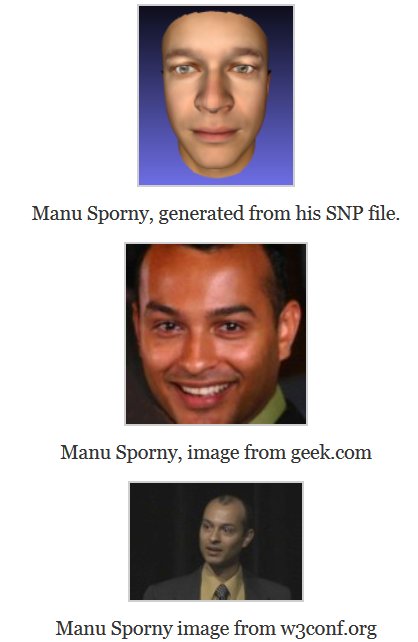
Its not perfect, but I think the comparison with the lower picture is not bad for a non-professional individual doing this as art.
The FBI probably has better tools.

edit on 6-5-2013 by alfa1 because: (no reason given)
Good grief, it is about time to toss in the towel. This is beyond demolition man stuff and is very real. Amazing. As OP says, it speaks for itself. As
technology progresses, they will be able to tell even more from samples. Such as , are you a smoker? How tall? Weight? Etc. The possibilities are
endless.
Originally posted by FraternitasSaturni
thats really cool. Theres a problem with aging tho, buts still really cool.
Here's an example of the aging problem.
The individual aged 25, the reconstruction (with crazy hairstyle), and the individual as they are today...
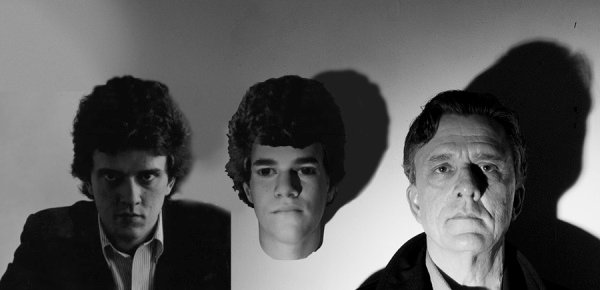
Wonder if the FBI have means to analyse telomere shortening to estimate age.
Edit - and with the reconstruction flipped so the lighting comes from the same direction...
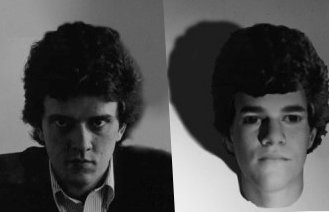
edit on 6-5-2013 by alfa1 because: (no reason given)
reply to post by alfa1
I wanted to thank you for the photos... and wanted to raise you a bit of a lunatic (?) fringe thought.....
There have been threads not to long ago concerning precog crimes like the movies, and even "genetic" testing being checked for family members that may have "medical/psychological" issues, the bar can be raised and reversed to show how you would look in the future if you are considered "of special interest"..
Peace, NRE.
I wanted to thank you for the photos... and wanted to raise you a bit of a lunatic (?) fringe thought.....
There have been threads not to long ago concerning precog crimes like the movies, and even "genetic" testing being checked for family members that may have "medical/psychological" issues, the bar can be raised and reversed to show how you would look in the future if you are considered "of special interest"..
Peace, NRE.
reply to post by alfa1
Yes, with the minor convenience of being able to look in the mirror. How about I send her my DNA, and she sends me back the results. That would be impressive (A match I mean).
She's done a self portrait...
Yes, with the minor convenience of being able to look in the mirror. How about I send her my DNA, and she sends me back the results. That would be impressive (A match I mean).
reply to post by alfa1
That's not bad but the head is much fatter in real life.
When this type of thing is perfected, it's a little scary actually.
That's not bad but the head is much fatter in real life.
When this type of thing is perfected, it's a little scary actually.
I wonder how soon before there will be handheld genetic DNA detectors available to the public? Law enforcement will have the version that has access
to the database so all they have to do is scan a DNA sample and a picture of you will pop up with a file including your life story. Man I wish I could
get my hands on one of those... After they are invented I mean. I'd come home from work and scan the whole house and my wifes body to see if she was
cheating. I'd modify the machine so I can press a button, and it will give the same alarm beep as if it detected some DNA other than mine or hers. So
then I could push the button and then look at her accusingly to see if I can scare her into confessing to something... That freakin whore... Goddamn I
love her.
Actually, I'm not married I was just imagining how some people would use it, and I have a strange sense of humor haha
Actually, I'm not married I was just imagining how some people would use it, and I have a strange sense of humor haha
reply to post by NoRegretsEver
Can you possibly explain yourself? Do you mean they can, or will, take one single DNA sample and from that, be able to project into the future to see what you will look like at any age? So basically like they got you for life, in a sense? I don't know what you mean by "if you're a person of interest"....I imagine this will be done at birth, for every person. Then if you have any known info, like hair color in case they dyed it, scars, tattoos, eye glasses, you add that in. They might do a whole body cause it might tell them approximate height and build, propensity for weight issues or any other defects, mutations, or deformities, if there was a twin, or conjoined twin, etc...
Can you possibly explain yourself? Do you mean they can, or will, take one single DNA sample and from that, be able to project into the future to see what you will look like at any age? So basically like they got you for life, in a sense? I don't know what you mean by "if you're a person of interest"....I imagine this will be done at birth, for every person. Then if you have any known info, like hair color in case they dyed it, scars, tattoos, eye glasses, you add that in. They might do a whole body cause it might tell them approximate height and build, propensity for weight issues or any other defects, mutations, or deformities, if there was a twin, or conjoined twin, etc...
reply to post by 3n19m470
I mean take the little hints that they like to throw out there, and then figure out how they all fit. Like this.
U.S. Cities Relying on Precog Software to Predict Murder
www.wired.com...
And then go into detail on WHO they think are criminals or have "questionable" backgrounds. This is in a much wider range, I will try yo find the thread that I wrote about the new psychological testing that has an entirely new set of standards for behavioral problems, and the alarming remarks made by the man that first invented the process.
Peace, NRE.
I mean take the little hints that they like to throw out there, and then figure out how they all fit. Like this.
U.S. Cities Relying on Precog Software to Predict Murder
The software parses about two dozen variables, including criminal record and geographic location. The type of crime and the age at which it was committed, however, turned out to be two of the most predictive variables.
“People assume that if someone murdered then they will murder in the future,” Berk told the news outlet. “But what really matters is what that person did as a young individual. If they committed armed robbery at age 14 that’s a good predictor. If they committed the same crime at age 30, that doesn’t predict very much.”
Shawn Bushway, a professor of criminal justice at the State University of New York at Albany told ABC that advocates for inmate rights might view the use of an algorithm to increase supervision of a parolee as a form of harassment, especially when the software produced the inevitable false positives. He said it could result in “punishing people who, most likely, will not commit a crime in the future.”
www.wired.com...
And then go into detail on WHO they think are criminals or have "questionable" backgrounds. This is in a much wider range, I will try yo find the thread that I wrote about the new psychological testing that has an entirely new set of standards for behavioral problems, and the alarming remarks made by the man that first invented the process.
Peace, NRE.
Originally posted by 3n19m470
Actually, I'm not married I was just imagining how some people would use it,
In theory you could use it now.
Find any strange hairs in your bed, you could have them examined and a portrait built up of what the owner of it looks like. You could not only find out if your hypothetical wife was cheating with, but also "see" who it is.
new topics
-
Those Great Fresh Pet Commercials
Television: 23 minutes ago -
S.C. Jack Smith's Final Report Says Trump Leads a Major Conspiratorial Criminal Organization!.
Political Conspiracies: 2 hours ago -
Advice for any young Adult .
General Chit Chat: 3 hours ago -
Joe meant what he said about Hunter's pardon....
US Political Madness: 4 hours ago -
Regent Street in #London has been evacuated due to a “bomb threat.”
Other Current Events: 4 hours ago -
It’s Falling…
Philosophy and Metaphysics: 6 hours ago -
Steering the Titantic from the Drydock.
Rant: 9 hours ago
top topics
-
Steering the Titantic from the Drydock.
Rant: 9 hours ago, 10 flags -
Joe meant what he said about Hunter's pardon....
US Political Madness: 4 hours ago, 9 flags -
Advice for any young Adult .
General Chit Chat: 3 hours ago, 6 flags -
S.C. Jack Smith's Final Report Says Trump Leads a Major Conspiratorial Criminal Organization!.
Political Conspiracies: 2 hours ago, 6 flags -
It’s Falling…
Philosophy and Metaphysics: 6 hours ago, 4 flags -
Regent Street in #London has been evacuated due to a “bomb threat.”
Other Current Events: 4 hours ago, 3 flags -
Those Great Fresh Pet Commercials
Television: 23 minutes ago, 2 flags
active topics
-
Those Great Fresh Pet Commercials
Television • 2 • : AlroyFarms -
Steering the Titantic from the Drydock.
Rant • 39 • : charlest2 -
Los Angeles brush fires latest: 2 blazes threaten structures, prompt evacuations
Mainstream News • 31 • : Vermilion -
What Comes After January 20th
Mainstream News • 25 • : NorthOS -
S.C. Jack Smith's Final Report Says Trump Leads a Major Conspiratorial Criminal Organization!.
Political Conspiracies • 17 • : Vermilion -
Advice for any young Adult .
General Chit Chat • 8 • : network dude -
Paramilitary Leaks - John Williams
Whistle Blowers and Leaked Documents • 11 • : xuenchen -
Meta Llama local AI system is scary good
Science & Technology • 52 • : ArMaP -
Those stupid GRAVITE commercials
Rant • 11 • : FlyersFan -
Let's Buy Greenland
General Chit Chat • 20 • : CriticalStinker
7
